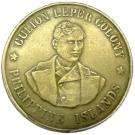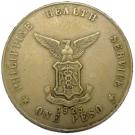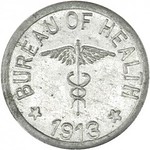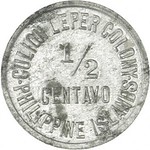
PREV ARTICLE
NEXT ARTICLE
FULL ISSUE
PREV FULL ISSUE
QUERY: WERE TOKENS USED IN THE KALAUPAPA LEPER COLONY?
I came across an article this week with a potential numismatic connection. -Editor
Not so long ago, people in Hawaii who were diagnosed with leprosy were exiled to an isolated peninsula attached to one of the tiniest and least-populated islands. Details on the history of the colony—known as Kalaupapa—for leprosy patients are murky: Fewer than 1,000 of the tombstones that span across the village’s various cemeteries are marked, many of them having succumbed to weather damage or invasive vegetation. A few have been nearly devoured by trees. But records suggest that at least 8,000 individuals were forcibly removed from their families and relocated to Kalaupapa over a century starting in the 1860s. Almost all of them were Native Hawaiian. Sixteen of those patients, ages 73 to 92, are still alive. They include six who remain in Kalaupapa voluntarily as full-time residents, even though the quarantine was lifted in 1969 —a decade after Hawaii became a state and more than two decades after drugs were developed to treat leprosy, today known as Hansen’s disease. The experience of being exiled was traumatic, as was the heartbreak of abandonment, for both the patients themselves and their family members. Kalaupapa is secluded by towering, treacherous sea cliffs from the rest of Molokai—an island with zero traffic lights that takes pride in its rural seclusion —and accessing it to this day remains difficult. Tourists typically arrive via mule . To read the complete article, see:
The numismatic connection? Leper colony tokens. Were these used in Kalaupapa? If not, why not? I looked in my copy of the Medcalf book on
Hawaiian Money (2nd edition), and didn't see any leprosy tokens, nor could I find any references on the web. Here are a couple
examples from the Culion Leper Colony in the Philippines. -Editor
1 Peso Culion Leper Colony token
 
To read the complete web page, see:
Hald Centavo Culion Leper Colony token
 
To read the complete web page, see:
Here are a couple stories about collecting the tokens that I ran across on CoinTalk. -Editor
I love handing examples of these coins (not in holders) to people. They will look them over front and back, they seem to find them somewhat interesting. Then comes the question "Where is it from?" "Leper colony." The look on their face is priceless and they can't hand them back fast enough. One of my friendly dealers keeps a small pile of the Columbia 50 centavos lazareto coins on his table. It’s an attractive nuisance. Inevitably, someone will reach across the table & start knocking them around asking what they are. When they learn that they are touching Leper colony coinage, they stop fingering the coins pretty quickly. After some small talk, they usually make a beeline walk to the men’s room to wash their hands. To read the complete CoinTalk discussion, see https://www.cointalk.com/threads/leprosy-colony-coins-data-previous-thread-links.203823/) Wayne Homren, Editor The Numismatic Bibliomania Society is a non-profit organization promoting numismatic literature. See our web site at coinbooks.org. To submit items for publication in The E-Sylum, write to the Editor at this address: whomren@gmail.com To subscribe go to: https://my.binhost.com/lists/listinfo/esylum All Rights Reserved. NBS Home Page Contact the NBS webmaster 
|